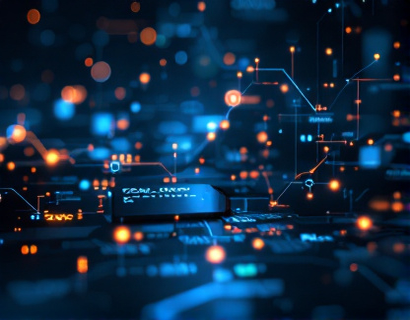Ucosystem Simplified: A Beginner's Guide to Navigating Interconnected Complexity and Unlocking Its Benefits
The Ucosystem, a term that encapsulates the intricate web of interconnected systems and technologies, can seem overwhelming for beginners. This guide aims to demystify the Ucosystem, breaking down its complex components and highlighting key benefits. By the end of this article, you will have a clearer understanding of how these interconnected elements work together and how you can effectively navigate and leverage them.
Understanding the Basics of the Ucosystem
The Ucosystem is not a single entity but a network of systems, platforms, and technologies that interact and influence each other. At its core, it represents the convergence of various digital and physical systems, creating a seamless and integrated environment. To grasp this concept, let's start with the fundamental components:
- Digital Systems: These include software applications, online platforms, and digital services that facilitate communication, data exchange, and transaction processing.
- Physical Systems: This encompasses hardware devices, IoT (Internet of Things) devices, and other physical infrastructure that connect and interact with digital systems.
- Data: Data is the lifeblood of the Ucosystem. It flows through various systems, providing insights, enabling automation, and driving decision-making.
- Networks and Connectivity: The backbone of the Ucosystem is the network that connects all these components, ensuring smooth and efficient communication.
Each of these components plays a crucial role in the Ucosystem. Digital systems provide the tools and platforms necessary for interaction, while physical systems offer the tangible means to engage with these digital tools. Data serves as the bridge, connecting insights with actions, and networks ensure that everything operates cohesively.
Key Benefits of the Ucosystem
The Ucosystem offers numerous benefits that enhance efficiency, innovation, and user experience. Here are some of the most significant advantages:
1. Enhanced Efficiency: By integrating various systems, the Ucosystem reduces redundancy and streamlines processes. Automation and real-time data exchange minimize manual interventions, leading to faster and more accurate outcomes.
2. Improved Innovation: The interconnected nature of the Ucosystem fosters collaboration and knowledge sharing. Developers and businesses can build upon existing platforms and technologies, accelerating the pace of innovation.
3. Better Decision-Making: With access to vast amounts of data and advanced analytics, individuals and organizations can make informed decisions. Real-time insights enable proactive strategies and timely responses to changing conditions.
4. Enhanced User Experience: The Ucosystem allows for personalized and seamless interactions. Users can enjoy tailored services and experiences across different platforms, enhancing satisfaction and engagement.
5. Increased Accessibility: The integration of physical and digital systems makes services more accessible to a broader audience. For instance, IoT devices can assist individuals with disabilities, while online platforms provide remote access to resources and services.
Navigating the Ucosystem: Practical Tips
Navigating the Ucosystem can be challenging, but with the right approach, you can effectively leverage its benefits. Here are some practical tips to help you get started:
1. Start with the Basics: Begin by understanding the fundamental components of the Ucosystem. Familiarize yourself with key terms and concepts to build a solid foundation.
2. Identify Your Goals: Determine what you aim to achieve by engaging with the Ucosystem. Whether it's improving efficiency, driving innovation, or enhancing user experience, clear goals will guide your actions.
3. Explore Existing Platforms: Look for established platforms and services that are part of the Ucosystem. Utilizing these can save time and resources, as they are often well-tested and optimized.
4. Embrace Data-Driven Approaches: Leverage data and analytics to inform your decisions. Use tools and services that provide insights to optimize your strategies and outcomes.
5. Stay Updated: The Ucosystem is constantly evolving. Stay informed about new technologies, trends, and best practices to remain competitive and adaptable.
6. Collaborate and Network: Engage with others who are also navigating the Ucosystem. Collaboration can lead to new ideas, shared resources, and mutual support.
Case Studies: Real-World Applications of the Ucosystem
To better understand the Ucosystem in action, let's look at a few real-world examples:
1. Smart Cities: Smart cities integrate various physical and digital systems to improve urban living. Traffic management systems, public Wi-Fi, and smart energy grids are all part of a cohesive Ucosystem that enhances the quality of life for residents.
2. Healthcare Technology: In healthcare, the Ucosystem connects electronic health records, wearable devices, and telemedicine platforms. This integration allows for better patient care, real-time monitoring, and data-driven diagnostics.
3. E-Commerce Platforms: Online marketplaces like Amazon leverage the Ucosystem by integrating payment systems, inventory management, and customer service tools. This seamless integration provides a smooth shopping experience and efficient operations.
4. Industrial Automation: In manufacturing, the Ucosystem connects machines, sensors, and software to create smart factories. This connectivity enables predictive maintenance, real-time monitoring, and optimized production processes.
Challenges and Considerations
While the Ucosystem offers numerous benefits, it also presents challenges that need to be addressed:
1. Security and Privacy: With increased connectivity comes the risk of security breaches and privacy concerns. It's crucial to implement robust security measures and adhere to privacy regulations.
2. Interoperability: Ensuring that different systems and platforms work together seamlessly can be challenging. Standardization and open protocols are essential to overcome interoperability issues.
3. Complexity Management: The sheer complexity of the Ucosystem can be daunting. Organizations need to develop strategies to manage and simplify this complexity, focusing on key areas of impact.
4. Digital Divide: Not everyone has equal access to the technologies that make up the Ucosystem. Efforts to bridge the digital divide are necessary to ensure inclusive benefits.
Future Trends in the Ucosystem
As technology continues to advance, the Ucosystem will evolve in several exciting ways:
1. Increased AI Integration: Artificial intelligence will play a more significant role in automating processes, providing insights, and enhancing user experiences.
2. Enhanced IoT Connectivity: The number of connected devices will grow, leading to more sophisticated and integrated physical systems.
3. Blockchain and Decentralization: Blockchain technology may offer new ways to ensure security, transparency, and decentralized data management within the Ucosystem.
4. Sustainability Focus: The Ucosystem will increasingly prioritize sustainability, with a focus on energy-efficient technologies and eco-friendly practices.
By staying ahead of these trends, individuals and organizations can better position themselves to thrive in the evolving Ucosystem.
In conclusion, the Ucosystem is a powerful and transformative force that integrates various systems to create a more efficient, innovative, and user-friendly environment. By understanding its components, leveraging its benefits, and addressing the associated challenges, you can effectively navigate and unlock the full potential of the Ucosystem.










































